
“Fashion is nonpolitical and nonpartisan,” Oscar de la Renta (who dressed nearly every first lady of the last half-century) famously said. On Friday afternoon I was invited to watch a Zoom presentation in celebration of Women’s History Month, “Fashion and the First Ladies” presented by Fashion Group International and New York Women in Film and Television. Cynthia Lopez, Executive Director of NYWFT announced that this was the group’s 95th Zoom of the pandemic. “How do we commemorate the first woman Vice President during Women’s History Month?” she asked.
Moderator Robin Givhan, Senior Critic at Large of the Washington Post hosted esteemed panelists Dr. Valerie Steele, Director & Chief Curator of the Museum at FIT; Fernando Garcia, Co-Creative Director of Oscar de la Renta and Monse; and Carson Poplin, Writer/Archivist/Fashion Historian in this hour long event.
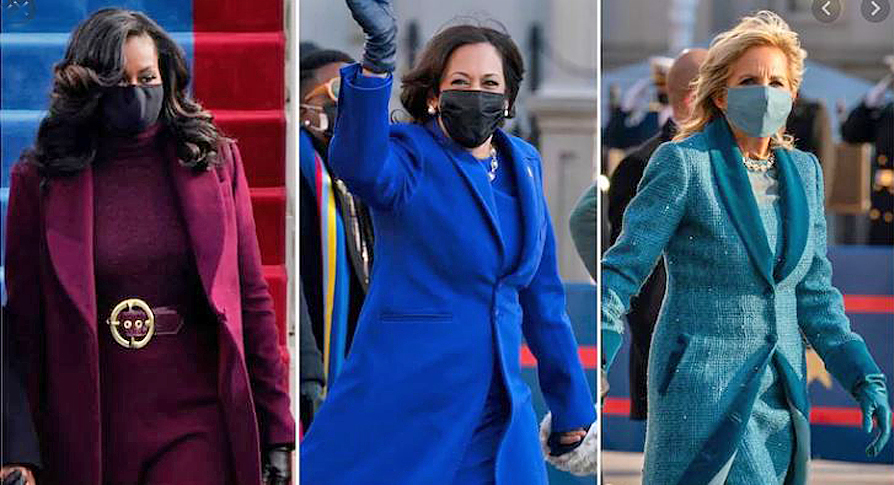
Of course, each First Lady comes to her fashion choices from a different and personal angle influenced by factors such as her husband’s message as well as her individual relationship and viewpoint on clothing. Caroline Harrison (wife of President Benjamin Harrison) followed her husband’s dictum to “buy American.” Edith Roosevelt (wife of Teddy) was big on sustainability and would find ways to recycle and upcycle her clothing. Eleanor Roosevelt (FDR’s wife and one of the founding members of FGI) focused on quality over aesthetics in her choices.
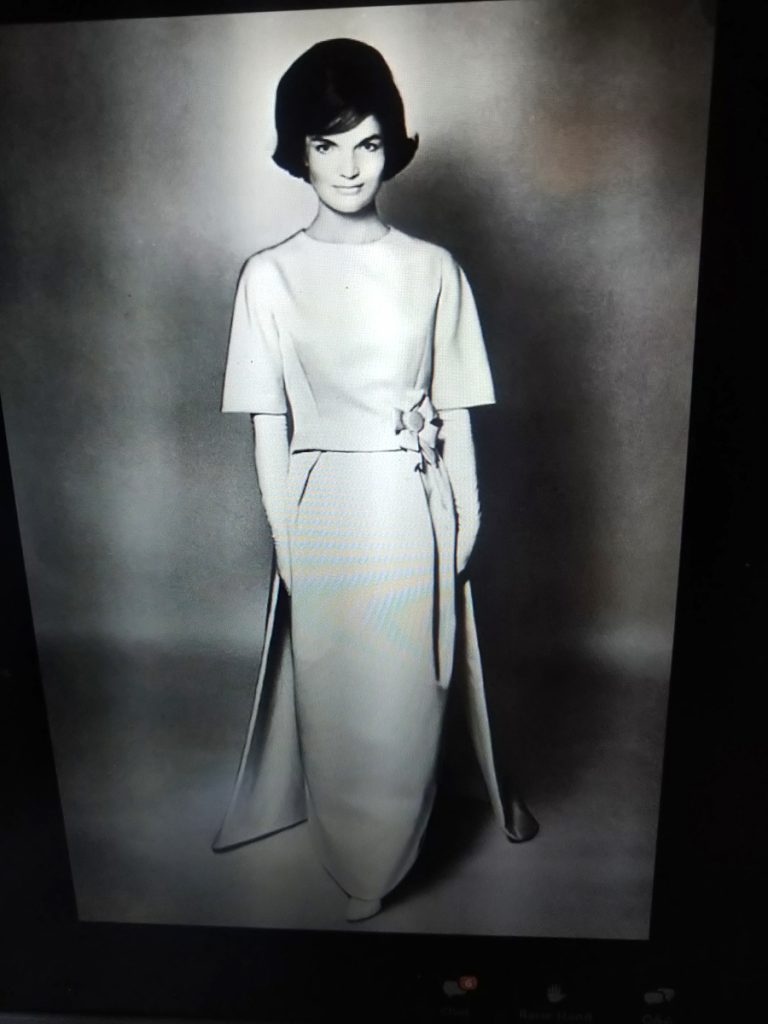
Photo Richard Avedon
Many First Ladies selected a favorite designer to help them realize their vision. Barbara Bush and Lady Bird Johnson favored the designs of Arnold Scaasi whose mission was to “try to help them make the best pictures as often as possible.” Jackie Kennedy famously loved French fashion but wore Oleg Cassini after being advised by fashion publicist Eleanor Lambert to wear an American designer. Laura Bush apparently confessed to being floored upon her move from the Governor’s mansion to the White House as she realized what she’d have to spend on a wardrobe. Bush turned to de la Renta for both inaugural gowns and day dressing. Nancy Reagan had a design relationship with Galanos and readily wore trends as well as the “best of American fashion.”
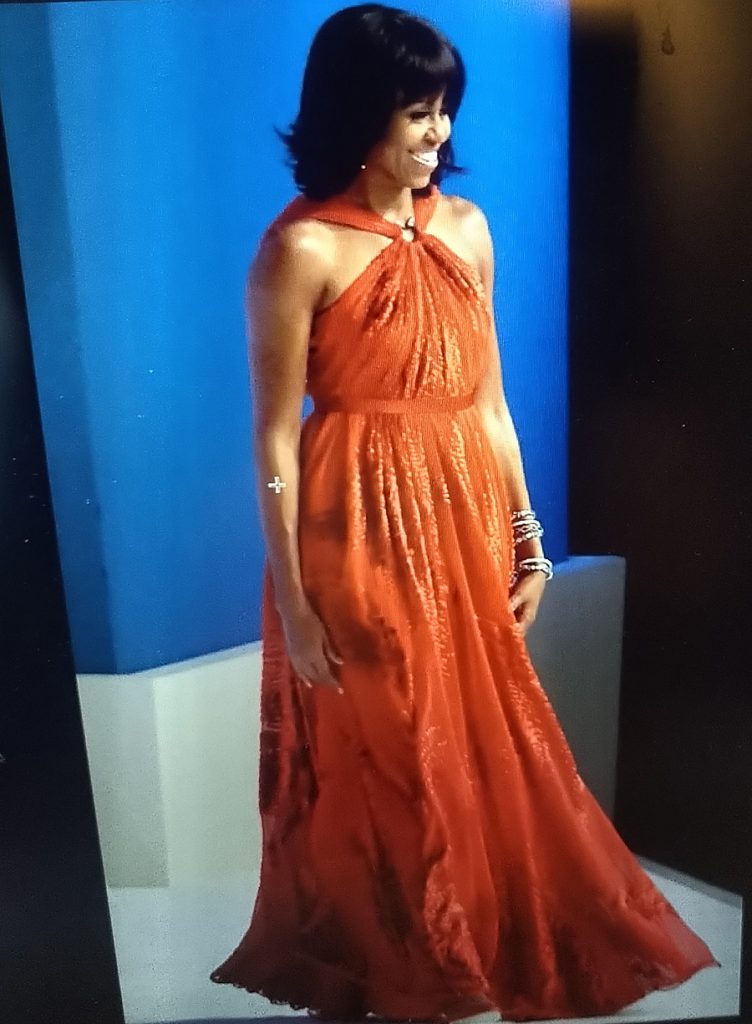
“Why are we obsessed with what the First Lady is wearing?” asked Givhan. “Why do we feel the right to comment?” Dr. Steele feels that the First Lady should “represent the administration and our country to the world.” Poplin agreed that as a “symbol of the administration we expect them to participate in fashion as both a representational and aspirational symbol — as a leading example.” Garcia remarked on the need for relatability as well as aspiration citing Michelle Obama who famously ran the gamut from J.Crew to a vast array of high end, often young relatively unknown designers thereby giving them a world platform. “Michelle Obama almost resented the attention paid to her fashion but she used fashion as a tool to communicate with the public – it was very effective, very progressive. She favored dresses over pants as her stylist thought dresses seemed more of a First Lady image,” added Poplin.
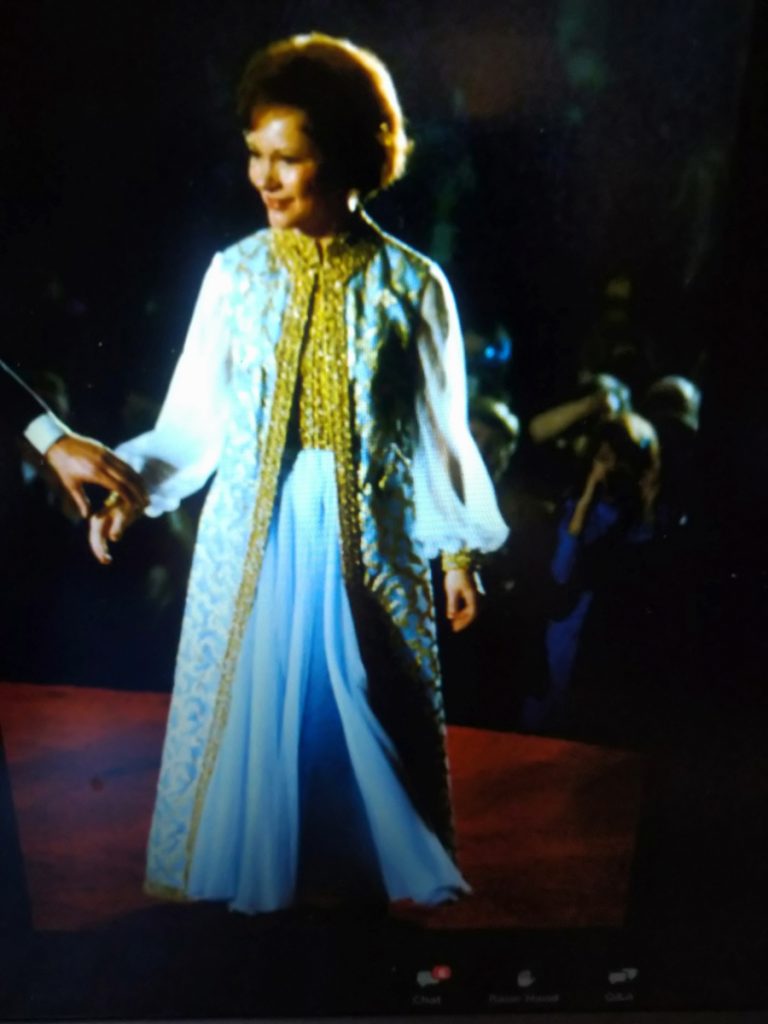
Jacqueline Kennedy’s iconic style was “graceful, magnetic – you can’t take your eyes off it. When I designed a look for Zoe Kravitz she was my starting point,” said Garcia. In contrast, people reacted negatively when Rosalynn Carter wore a dress she had already worn, for the inauguration. “Now that would be something to be celebrated,” Garcia commented. Poplin added that the Carter administration came into a recession so this was a symbol of their presence in the White House. Dr. Steele argued that when it comes to “ceremonial garments” such as one worn for an inauguration “new and special would be expected.”
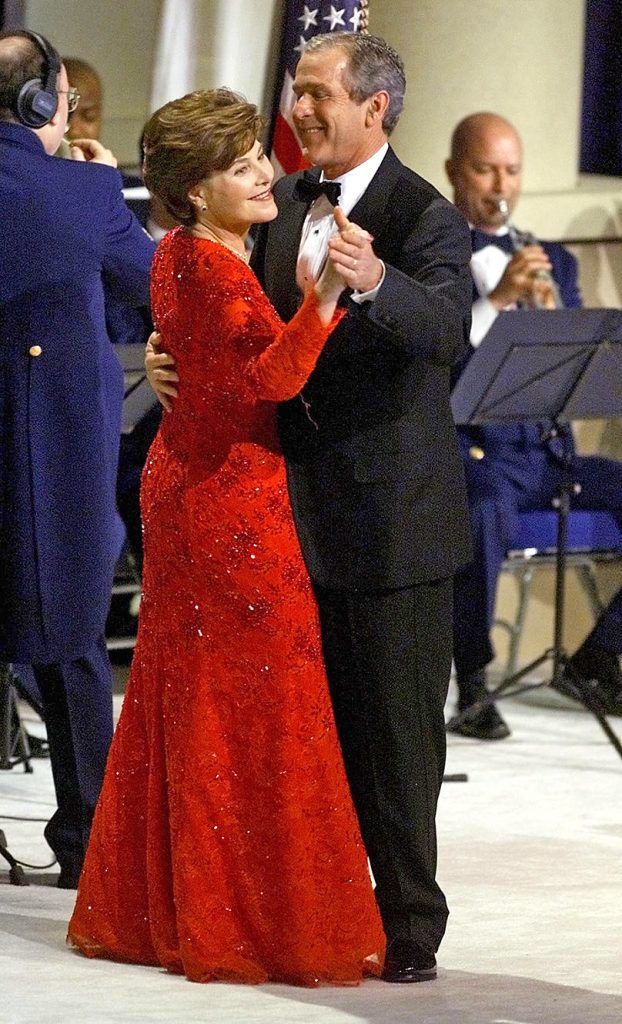
wearing a beaded Michael Faircloth gown
According to Poplin “you are damned if you do, and damned if you don’t” when it comes to spending money and caring about fashion. “You can’t please everyone.” Garcia thinks it’s important to “strike a balance,” and to “support young designers.” He also thinks it’s important for the First Lady to be able to focus on doing her job, not on what she’s wearing. He recently dressed Dr. Jill Biden (“one of the happiest days of my life!”) in a floral dress with asymmetric hem. “It’s such a great honor to have that privilege (of dressing a First Lady),” he said. “My job is to make them feel their best. Oscar’s relationship to Laura Bush and Hillary Clinton – I dream of having that.”
He also stressed that there are “very specific goals that they want to look like. It’s important to have that dialogue.” Garcia mentioned being asked by a client about a coat Kamala Harris was photographed in. It was not his (it was Max Mara) however the woman who asked was equal parts thrilled not to see it reported on but also annoyed that she couldn’t find the info in the media.
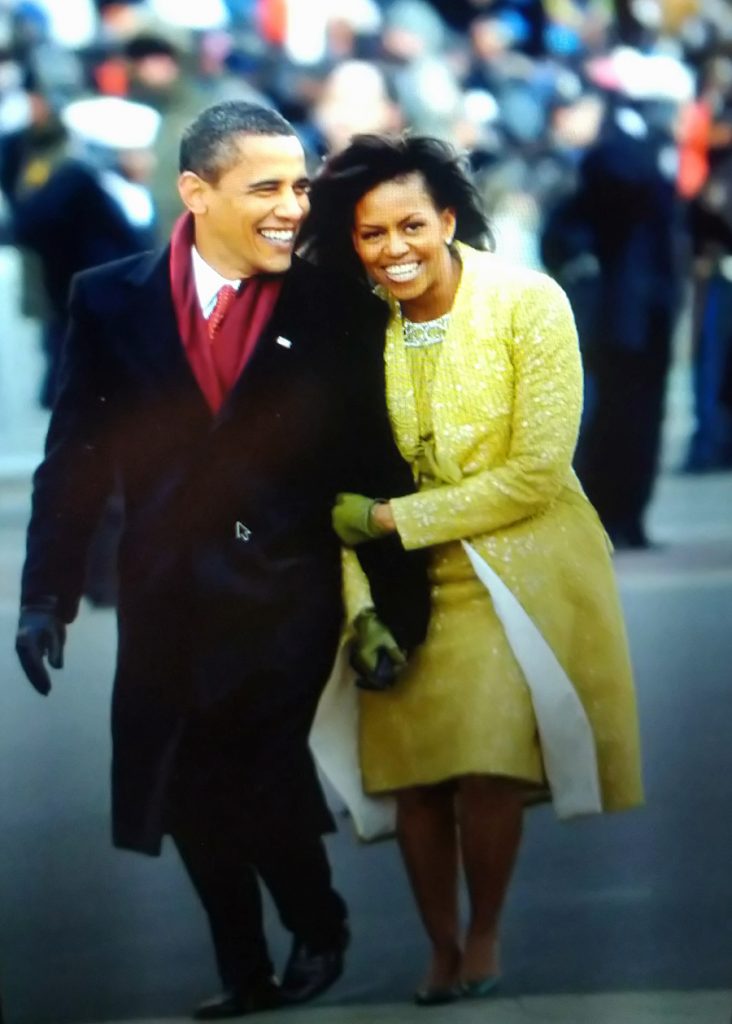
Givhan asked if racism was perhaps behind the criticism of Obama’s sleeveless dress at the State of the Union when later fashion historians found photos of Jackie Kennedy in a sleeveless dress. Dr. Steele remarked on the “long history of racism in the US – the commentary would be influenced by that. There’s an implication of unintentional racism – that she didn’t know better.” She added that Obama’s affinity for choosing designers of color was important and showed their creativity.
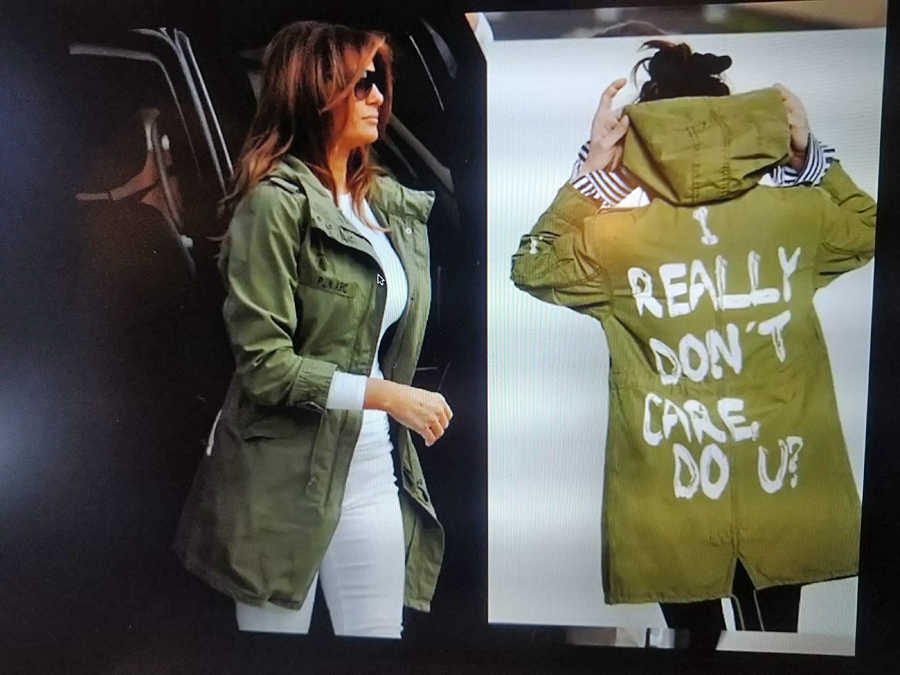
By contrast, Melania Trump had an affinity for foreign designers. Perhaps because American designers expressed something close to revulsion at the thought of dressing her, apparently due to her husband’s policies. “If she had asked, I would have complied,” said Garcia, in the true spirit of his mentor. Poplin offered that “at the time of Melania, patronizing American brands was not a central concern. Maybe because of her modeling roots or because she wasn’t born in the U.S.? I wish she could have used fashion in a more effective and interesting way.” And what of the infamous Zara jacket worn en route but not during her visit to the Southern border? “When you have actual writing on clothes you communicate a message. Was it not caring about migrant children in cages or not caring about what the media says?” asked Dr. Steele.

Hillary Clinton’s controversial pantsuits were briefly discussed however it was pointed out that she wore those on the campaign trail as a candidate – not as First Lady. “I think it just made her feel her best. If she calls me up and says she wants 400 other pantsuits I will comply,” said Garcia. The designer also mentioned the serendipitous nature of receiving a call from the “Kamala camp” just this morning. “It was surreal. Do they know that I’m doing this forum?” He revealed that it was concerning an “incentive to use fashion for the economy.”
What is the role of fashion magazines? Do they celebrate the First Lady regardless of politics? “The media is expected to report,” said Poplin. Like everything else it has become politicized and polarized not featuring Melania Trump as Vogue had featured her predecessors in the past. Dr. Steele added that magazines and the media in general are less monolithic than they once were – now Instagram has taken their place.
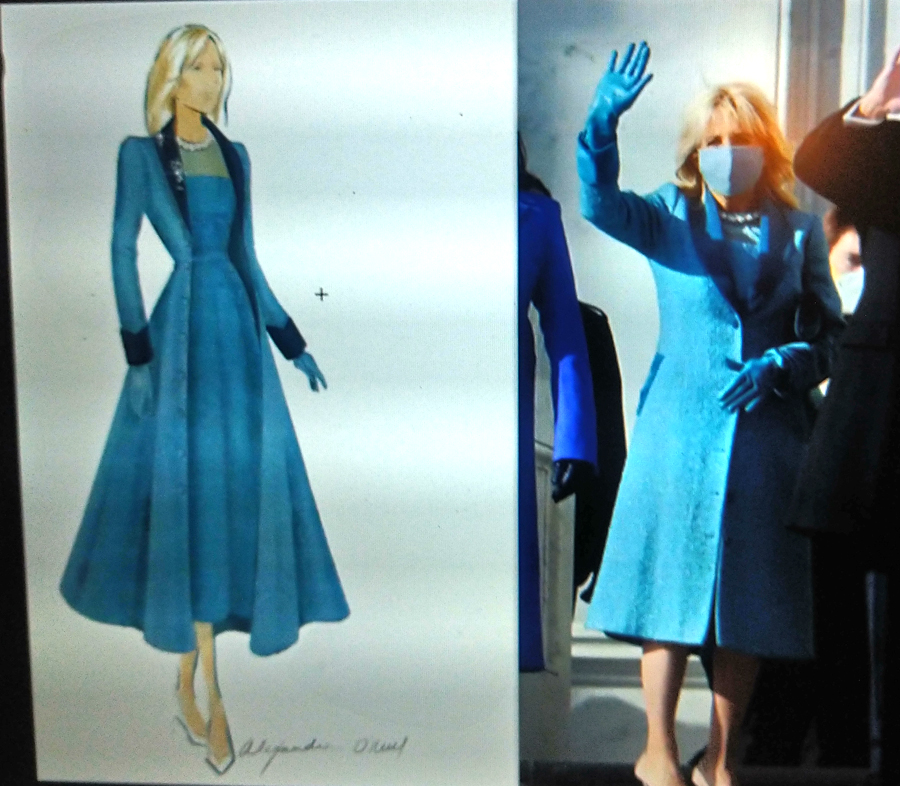
First Lady footwear was briefly discussed – Obama’s high heels for the first inauguration followed by kitten heels for the second. Dr. Steele said that higher and narrower stilettos were all the rage. “Unless it’s wildly inappropriate for a particular occasion it’s accepted,” — no doubt a reference to Melania’s Louboutins en route to survey hurricane damage although she changed her outfit to white jeans and sneakers before disembarking Air Force One. On the other hand, they saw nothing wrong with Michelle’s shorts as she came down the aircraft stairs.
Lastly, Givhan asked who everyone’s favorite first lady was. I bet you can’t guess! Yes, it was Michelle Obama unanimously. “There was a shift with her – a new direction,” said Dr. Steele. “She set a precedent, now it’s up to others to decide if they want to follow in her footsteps or not.”
